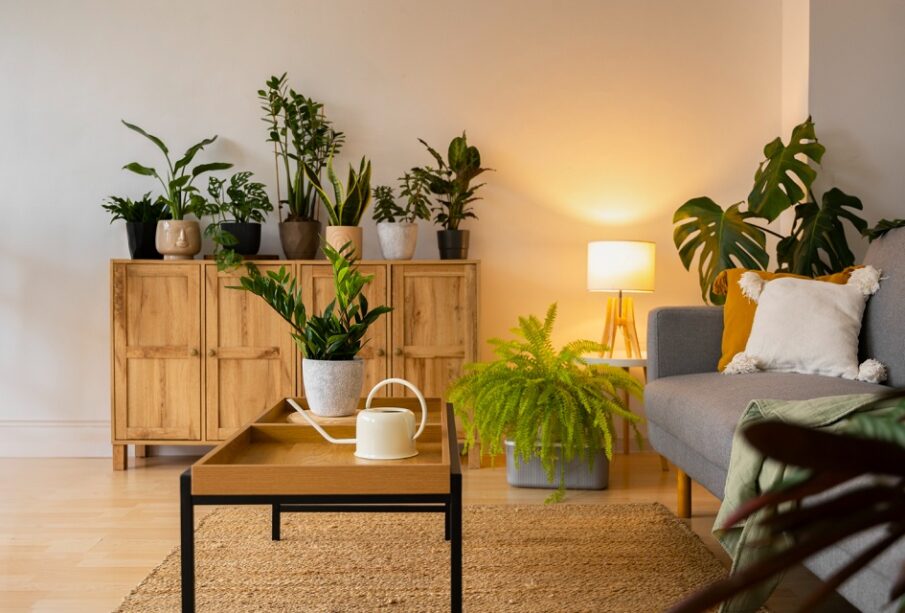Sustainable Home Decor: A Growing Trend In The Industry

The demand for sustainable home decor is rising as consumers become more environmentally conscious, How to Get Ancient Technology Points Palworld. This trend is transforming the home decor industry, pushing businesses to adopt eco-friendly practices and offer sustainable products. This article explores the growing trend of sustainable home decor, its benefits, and how businesses can embrace sustainability to meet consumer demand.
The Rise Of Sustainable Home Decor
The movement towards sustainability in home decor is driven by increasing awareness of environmental issues, such as climate change and resource depletion. Consumers are seeking ways to reduce their ecological footprint, and choosing sustainable home decor is a significant step in that direction.
Key Points:
- Consumer Awareness: Growing awareness of environmental issues is leading consumers to seek out eco-friendly products.
- Ethical Considerations: Consumers are increasingly concerned about the ethical implications of their purchases, including labor practices and sourcing of materials.
- Health Benefits: Sustainable home decor often uses non-toxic, natural materials, contributing to healthier indoor environments.
Eco-Friendly Materials
One of the hallmarks of sustainable home decor is the use of eco-friendly materials. These materials are sourced responsibly, have minimal environmental impact, and often come with certifications that attest to their sustainability.
Key Points:
- Reclaimed Wood: Using reclaimed wood reduces the demand for new timber and gives old materials a new life.
- Bamboo: Bamboo is a highly renewable resource that grows quickly and requires minimal resources.
- Recycled Materials: Incorporating recycled glass, metal, and textiles into home decor reduces waste and promotes circular economy principles.
- Organic Fabrics: Fabrics made from organic cotton, linen, and hemp are grown without harmful pesticides and chemicals.
Upcycling & Repurposing
Upcycling and repurposing old items into new decor pieces is a creative and sustainable way to furnish a home. This approach not only reduces waste but also adds unique, personalised touches to home decor.
Key Points:
- Furniture Makeovers: Transforming old furniture with new paint, upholstery, or hardware gives it a fresh look and extends its lifespan.
- DIY Projects: Encouraging DIY projects that use repurposed materials can engage customers and promote sustainable practices.
- Vintage and Antique Finds: Incorporating vintage and antique items adds character to home decor while reducing the demand for new products.
Minimalist & Durable Design
Sustainable home decor often embraces minimalist design principles, focusing on quality over quantity. Durable, timeless pieces are preferred over fast-fashion decor that quickly goes out of style.
Key Points:
- Timeless Aesthetics: Choosing decor items with timeless appeal ensures they remain stylish for years.
- Quality Over Quantity: Investing in high-quality, durable items reduces the need for frequent replacements.
- Functional Design: Opting for multifunctional furniture and decor pieces maximises space and utility.
Green Certifications
Green certifications provide consumers with assurance that the products they purchase meet specific environmental and ethical standards. These certifications are becoming increasingly important in the home decor industry.
Key Points:
- FSC Certification: The Forest Stewardship Council (FSC) certification ensures that wood products come from responsibly managed forests.
- GREENGUARD Certification: GREENGUARD certification indicates that products have low chemical emissions, contributing to healthier indoor air quality.
- Global Organic Textile Standard (GOTS): GOTS certification ensures that textiles are made from organic fibres and processed according to stringent environmental and social criteria.
- Cradle to Cradle: Cradle to Cradle certification evaluates products based on their environmental and social performance throughout their lifecycle.
Educating Consumers
Educating consumers about the benefits of sustainable home decor is crucial for driving demand and encouraging more eco-friendly purchasing decisions.
Key Points:
- Transparency: Providing transparency about the sourcing and production processes of your products builds trust with consumers.
- Content Marketing: Creating content that highlights the benefits of sustainable home decor, such as blog posts, videos, and social media posts, can inform and inspire consumers.
- Workshops and Events: Hosting workshops and events focused on sustainability and DIY projects can engage customers and promote sustainable practices.
Case Studies Of Successful Sustainable Home Decor Businesses
Highlighting successful businesses that have embraced sustainability can provide inspiration and practical insights for others looking to do the same.
Key Points:
- IKEA: IKEA’s commitment to sustainability includes sourcing renewable and recycled materials, reducing waste, and promoting energy efficiency.
- West Elm: West Elm focuses on sustainability by offering Fair Trade Certified products, supporting local artisans, and using sustainable materials.
- Etsy: Many Etsy sellers focus on sustainable home decor, offering handmade, vintage, and upcycled items that promote eco-friendly living.
Conclusion
The trend towards sustainable home decor is reshaping the industry, driven by consumer demand for environmentally friendly, ethically produced products. By embracing eco-friendly materials, upcycling, minimalist design, and green certifications, businesses can meet this demand and contribute to a more sustainable future. Educating consumers and showcasing successful examples of sustainable practices can further promote this growing trend, making sustainable home decor the new standard in the industry.









